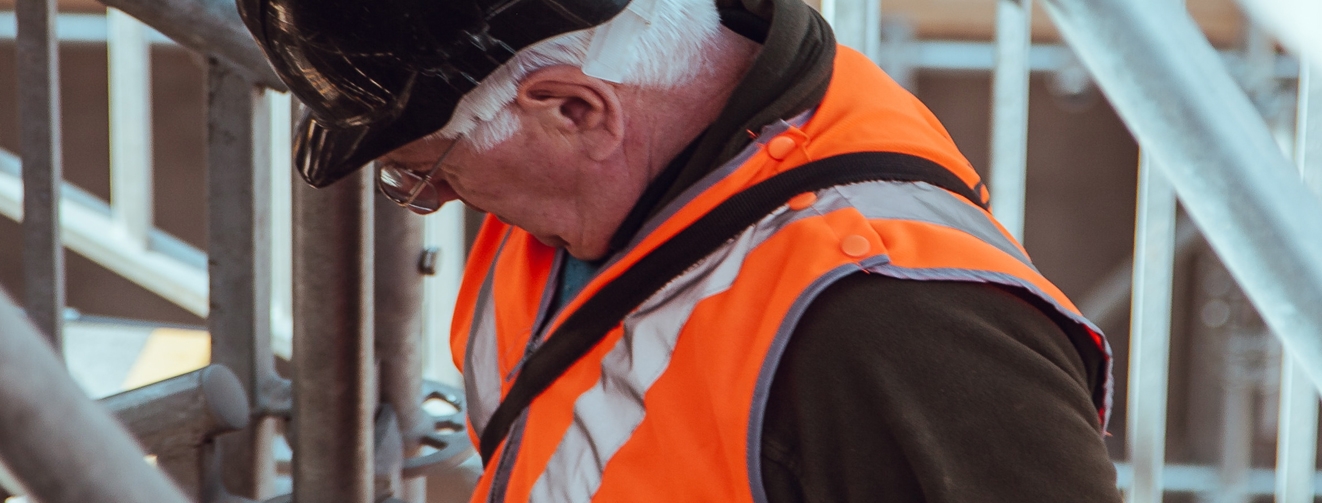
7 Tips to Help Protect Your Team from HAVS
Celtic Rock Rock Services Limited was fined over £36,000 by the Plymouth Magistrates’ Court and its director ordered to serve a 12-week custodial sentence, a one-year suspension and pay costs of £3,500.
“This was a case of the company and its director completely failing to grasp the importance of HAVS risk assessment and health surveillance.
If they had understood why health surveillance was necessary, it would have ensured that it had the right systems in place to monitor workers health and the employees’ conditions would not have been allowed to develop, one of which was to a severe, life altering stage.”
Caroline Penwill
HSE inspector
Historically, Hand Arm Vibration Syndrome (HAVS) wasn’t taken seriously in the construction industry. And until fairly recently, most of us accepted it as “just a part of the job”. Here at Castle and Pryor, we’re known for our commitment to health and safety. Avoiding HAVS and the costs (both physical and monetary) that come with it, is one of the reasons we specialise in diamond drilling. We launched our own answer to the HAVS crisis: Sindrilla. In this article, we’ll take a closer look at what HAVS is and explain how you can protect your team, covering:
- What is HAVS?
- What are the symptoms?
- Do all hand-held power tools cause HAVS?
- Do I need to protect my workers from HAVS?
- How do I know if my team is at risk?
- How do I calculate HAVS exposure?
- How can C&P help prevent HAVS
1. What is HAVS?
Hand Arm Vibration Syndrome (HAVS) is the severe damage to nerves, blood vessels and joints caused by exposure to vibration. Anyone who regularly uses hand-held power tools for more than about 45 minutes a day (depending on the tool) is at risk. That’s nearly 2 million people in the UK, according to the HSE.
2. What are the symptoms?
If you work in the construction industry, the chances are that you or someone you know already suffers from:
- Loss of feeling, and/or
- Pins and needles in their hands
- Raynaud's Syndrome
- White finger
- Carpal Tunnel Syndrome
These are all symptoms of nerve damage caused by Hand Arm Vibration Syndrome. The bad news is that, once the damage is done, it’s permanent. The good news? HAVS is preventable.
3. Do all hand-held power tools cause HAVS?
Any vibrating equipment can cause HAVS, including hammer drills, hydraulic breakers, chainsaws and even common garden tools like strimmers and lawnmowers. Whether or not you are at risk while using them depends on:
- which tools you use and
- how long you use them for
The HSE provides handy guidance on both of these factors and how to calculate your ‘exposure levels’. There are two action levels you can work at, the first level is the maximum exposure recommended by the HSE and the second is the legal limit. In certain circumstances, you can work between the two levels safely, providing you take the right precautions and don’t do this regularly.
Here are the two action levels, as detailed by the HSE:
- Exposure Action Value (EAV) = daily vibration exposure limit, above which employers need to take action. The greater the exposure level, the greater the risk of permanent nerve damage.
- Exposure Limit Value (ELV) = maximum vibration exposure that one person can legally be exposed to in one day.
4. Do I need to protect my workers from HAVS?
Yes, if any of your employees are regularly exposed to vibration levels above the EAV you must provide health surveillance. This process starts with a questionnaire and you might need to refer employees to occupational therapy, if their exposure or symptoms increase. Even reaching the EAV on a regular basis will increase an employee’s chance of developing white finger or other symptoms.
5. How do I know if my team is at risk?
HAVS can affect people working in all sectors but according to the HSE, high-risk industries include:
- Construction
- Engineering
- Forestry
- Foundries
- Vehicle manufacture and repair
- Maintenance of parks, gardens, grounds etc
- Shipbuilding and ship repair
- Utilities like gas, water and telecommunications
You can measure your HAVS risk by calculating your ‘exposure points’, which should stay under 100 to avoid reaching the EAV.
Exposure points will vary depending on your tool of choice and how long it’s used for. For example, a Hilti TE2 drill is 12.1m/s2 so one person can only operate it for 20 minutes per day before hitting the EAV. Of course, this only applies if the drill is being operated by hand.
TIP: Always check your numbers using the HSE’s HAVS calculator and do not assume exposure levels will be lower, based on new features like ‘low-vibration’ handles. This often isn’t the case.
Remember, if anyone in your team reaches more than 100 exposure points you need to begin health surveillance and consult a health professional. Exceeding 400 points is illegal in the UK.
6. How do I calculate HAVS exposure?
You can use the HSE’s free Hand Arm Vibration exposure calculator to work out an individual employee’s total exposure. The site also explains how to use it.
Visit the HSE website for more information about your legal obligations as an employer.
7. How can Castle & Pryor help prevent HAVS?
Protecting our team from HAVS has always been a priority for us and that’s one of the reasons we diamond drill. Diamond drilling creates less vibration than rotary percussion drilling, so it’s inherently safer. But following the launch of our hands-free drilling solution Sindrilla, we’ve been able to safeguard our team, reduce costs for our clients and complete drilling work safely in even less time. Find out more about how safe percussion drilling can eliminate your HAVS risk.